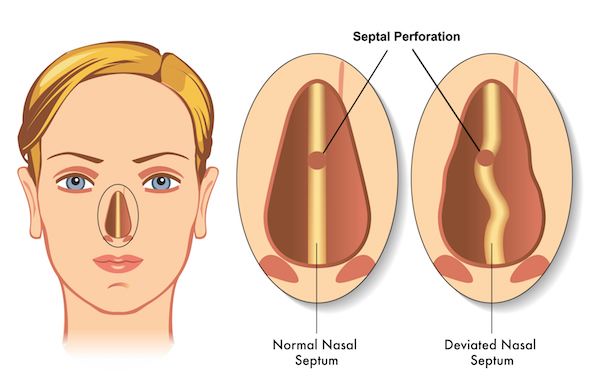

Perforation of the nasal septum may occur due to various reasons.
Trauma:
Malignant diseases:
Chronic infections:
Poisons:

60 % of the septal perforations are asymptomatic. The symptoms depend on the area of perforation.
Septal perforation repair surgery can be performed using either the “closed technique” or “open technique”. The advantages of the former consist in the fact that it does not leave any external scar. Many Surgeons prefer the “open” technique, as it offers a wider operating field, thus allowing better access to the superior and posterior margins of the perforation (especially in large and/or posterior perforations) and affording binocular vision.
1. Flaps- Surgery aimed at correcting nasal septal perforations is based on two main principles: repairing the perforation using mucosal mucoperichondrial and/or mucoperiosteal flaps from the internal nasal cavity, and connective tissue autografts interposed between the mucosal flap. Buccal flap can also be used.
2. Silastic buttons– silicone prosthetic devices can be used in those patients presenting contra-indications for surgery.
3. Grafts-
a) Temporalis fascia. b) Composite pinna graft.